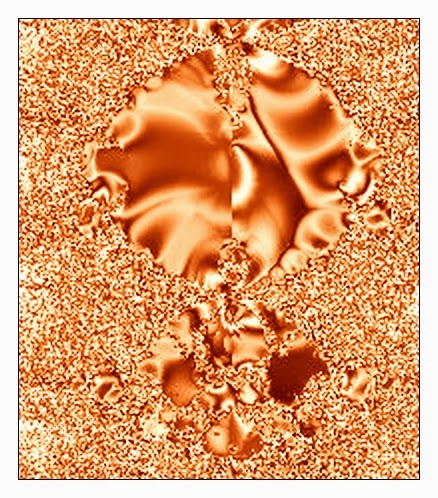 Eukaryotic cells that include humans, animals, and amoebae, contain small structures called organelles. Bacteria do not in general contain these structures. Religious persons have argued that there is no way a bacterium can evolve into even a single amoeba or human like cell. However, Research biologist Lynn Margulis has finally won acceptance for the theory that eukaryotic cells formed by symbiosis among bacterial cells. Thus early evolution takes place by symbiosis as well as viral action. It is only when more complex multi-celled life forms emerge that viral action becomes the primary mechanism for further evolution. The cells of all other living things rely on organelles. Bacteria were thought to manage with a single open space devoid of partitions Now a team led by microbiologist Roberto Docampo at the University of Illinois in Urbana say they have found the first organelles in that have a direct counterpart in higher organisms. (M. Seufferheld et al. J. Biol. Chem.; 2003). Such bacteria are the precursors of single celled amoeba. Archea are not precursors to amoeba because the type of internal bonds between lipids in archea are based on ether rather than ester. The evolution of amoeba from bacteria is in fact only a small evolutionary step.
Eukaryotic cells that include humans, animals, and amoebae, contain small structures called organelles. Bacteria do not in general contain these structures. Religious persons have argued that there is no way a bacterium can evolve into even a single amoeba or human like cell. However, Research biologist Lynn Margulis has finally won acceptance for the theory that eukaryotic cells formed by symbiosis among bacterial cells. Thus early evolution takes place by symbiosis as well as viral action. It is only when more complex multi-celled life forms emerge that viral action becomes the primary mechanism for further evolution. The cells of all other living things rely on organelles. Bacteria were thought to manage with a single open space devoid of partitions Now a team led by microbiologist Roberto Docampo at the University of Illinois in Urbana say they have found the first organelles in that have a direct counterpart in higher organisms. (M. Seufferheld et al. J. Biol. Chem.; 2003). Such bacteria are the precursors of single celled amoeba. Archea are not precursors to amoeba because the type of internal bonds between lipids in archea are based on ether rather than ester. The evolution of amoeba from bacteria is in fact only a small evolutionary step.
Amoebas are single-celled organisms. The inside of an amoeba is a jelly-like fluid called protoplasm. Bits of food and other materials float around in the protoplasm. Amoebas like bacteria reproduce by a process called binary fission. This means that one amoeba can split in half and make two identical new amoebas. Amoebas eat bacteria, Thus when amoeba emerge on a planet they already have a food source in the form of bacteria that precede them. Freshwater amoeba has crystals in them. These are a crystalline form of urea, a waste product that they eject along with the water their bodies absorb from the surrounding –The birth of pissing.
A report, which appears in the February 24 issue of Nature, presents the first genome-wide study of an amoeba. The genome sequence of the parasitic amoeba Entamoeba histolytica, a leading cause of severe diarrhea disease in developing countries, includes an unexpectedly complex repertoire of sensory genes as well as a variety of bacterial-like genes that contribute to the organism's unique biology. The presence of bacterial genes is expected since amoebas develop from bacteria. Detailing the study scientists incorrectly concluded that E. histolytica likely picked up a significant number of its metabolic genes from bacterial co-inhabitants of the human gut. The fact is that this amoeba developed from the corresponding bacteria. Identification of these genes sheds new light on the unusual shared biology between the parasitic amoeba and anaerobic gut bacteria. The sequencing of E. histolytica was a collaborative effort led by The Institute for Genomic Research (TIGR) in Rockville, MD, and by the Wellcome Trust Sanger Institute in the U.K.
NEXT: https://alienaccount.blogspot.com/2006/09/from-single-to-multiple-cells.html
NEXT: https://alienaccount.blogspot.com/2006/09/from-single-to-multiple-cells.html







No comments:
Post a Comment